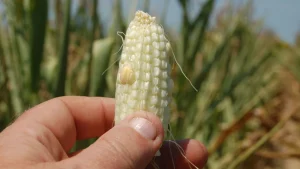
The 2022/2023 farming season will be a sad memory for thousands of agricultural producers. Although people already knew it would be a tough season, reality has surpassed the most pessimistic forecasts: production estimates to this day are half the projections from the beginning of the farming cycle. The drought has already dealt a devastating blow: as of yesterday, agricultural consultants are advising farmers not to sow soy because the risk would be too high.
According to data from the Rosario Stock Exchange, the estimations back then for the core zone –the most productive in the country– was 19.7 million tons (Mt) on the basis of an average yield of 40 qq/ha (quintals per hectare) and an intention to plant 5.1 million hectares of soy. The Rosario entity confirmed that “today, production expectations are 10.7 Mt and that number decreases every week.
This drop is mostly due to the sharp fall in potential yields because of the small growth of the crop in the core zone. Today, expectations are only an average of 23 qq/ha and a drop in the planted area of almost half a million hectares due to the extreme lack of water that hindered the intended sowing plans. This way, the soy area got adjusted to 4.7 Mha.”
Estimations drop week after week because every announcement of upcoming rain turns into a disappointment. The last opportunities to sow failed in 75% of the area due to a lack of rain.
The rain that didn’t come
At least 25mm of rain had to fall to sow the remaining plants and allow the hardest-hit crops to remain in the race, yet none of that happened and the necessary millimeters were only recorded in three of the 36 stations in the region. Add to this the high temperatures that set a high rate of damage, with irreversible consequences on crops.
The data is compelling: the status of 75% of the first batch of soy is between fair and bad, and the same is true of 80% of the second batch soy. While advisors suggest not planting soy after January 15, from now on it’s all at the producer’s own risk. Some will still try, with the expectation of harvesting something, and others may turn to greening lands for livestock.
The province of Santa Fe was hit hardest by the drought. The entire province is affected by the lack of rain, so the economic impact there will be hard to overcome for the entire productive network.
Daniel Ferrero, an agricultural producer from the central area of the province, said: “We are 15 days away from losing all second-batch soy and corn crops, and if we lose that, dairy farmers will not have fodder reserves for the rest of the year. I am very concerned about what we are going to do in the coming months but this is going to hit everyone, not just our sector. I think the government still hasn’t noticed the problem.”
For now, producers await the urgent declaration of an agricultural emergency for the province. It is worth remembering that last week the Economy Minister, Sergio Massa, made announcements for the sector and then confirmed that he is working on a program that will provide benefits for those most affected by the drought.

























